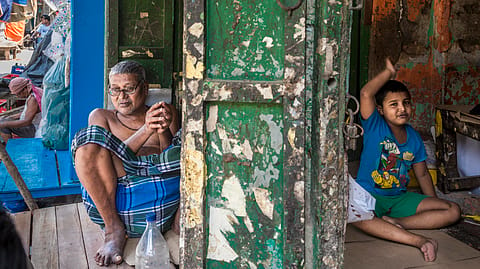India on track for Sustainable Development Goals 1.2, says UNICEF; hails gains in child poverty reduction
UNICEF's report praises India's progress in reducing child poverty, highlighting flagship programs that have helped 248 million citizens escape multidimensional poverty.

India has made significant progress in poverty reduction, and its flagship programmes have supported investments in children, steering the country to be on track for Sustainable Development Goals (SDG) 1.2 ahead of the 2030 endline, according to the UNICEF State of the World’s Children Report 2025 on children’s wellbeing.
More than 1 in 5 children in low- and middle-income countries, about 400 million globally, are deprived of at least two areas critical for their health, development, and wellbeing, according to UNICEF’s flagship report. It highlights that globally, millions of children still lack access to basic services such as education, clean water, safe sanitation, housing, health and nutrition, which deepens inequality, slows growth and weakens the social fabric that leaves a lifelong impact even across generations.
It says the youngest children, those with disabilities and those living in crises are particularly vulnerable. Climate shocks, political crises and national debts are pushing families deeper into hardship, threatening to undo hard-earned gains in children’s wellbeing.
Under the UN's SDG 1.2, by 2030, countries must reduce poverty by at least half.
248 mn children escaped poverty in India
As per the National Multidimensional Poverty Index (Niti Aayog), India helped 248 million citizens, including children, escape multidimensional poverty between 2013–14 and 2022–23, with the national MPI rate dropping from 29.2% to 11.3%. Significant increase in social protection coverage from 19 per cent in 2015 to 64.3 per cent, reaching 940 million citizens in 2025, combined with sustained social sector investments, contributed to this progress in poverty reduction.
“The State of the World’s Children 2025 report reminds us that ending child poverty is achievable with the tools and knowledge we have. India’s progress shows that further acceleration of effective programmes can help reach the last mile and India’s Vision 2047. Improving children’s wellbeing isn’t just about resources, it’s about the collective will and leadership to prioritise children in every decision we make,” said Cynthia McCaffrey, UNICEF India Representative.
Recommended Stories
Notably, flagship programmes like Poshan Abhiyaan, Samagra Shiksha, PM-KISAN, Mid-Day Meal Scheme, Beti Bachao Beti Padhao, Swachh Bharat, Jal Jeevan Mission, and India’s world-leading digital public infrastructure (DPI) have helped deliver nutrition, education, income support, sanitation and financial inclusion at scale.
Safeguarding fiscal space for children programmes and enhancing overall spending in key sectors of health and education would be crucial for India, says Dr Pinaki Chakraborty, Visiting Distinguished Professor, National Institute of Public Finance and Policy (NIPFP). Viksit Bharat @2047 cannot be defined through the narrow lens of per capita GDP alone, says Dr Nilanjan Ghosh, Vice President, Development Studies & Kolkata Head, Observer Research Foundation (ORF). "A truly developed economy must embed equity, distributive justice, and sustainability into its vision."
The report also highlights that about 206 million children in India still lack access to at least one of six essential services: housing, sanitation, water, nutrition, education, and health. Out of these, 62 million children experience two or more deprivations, hampering them from reaching their full potential.